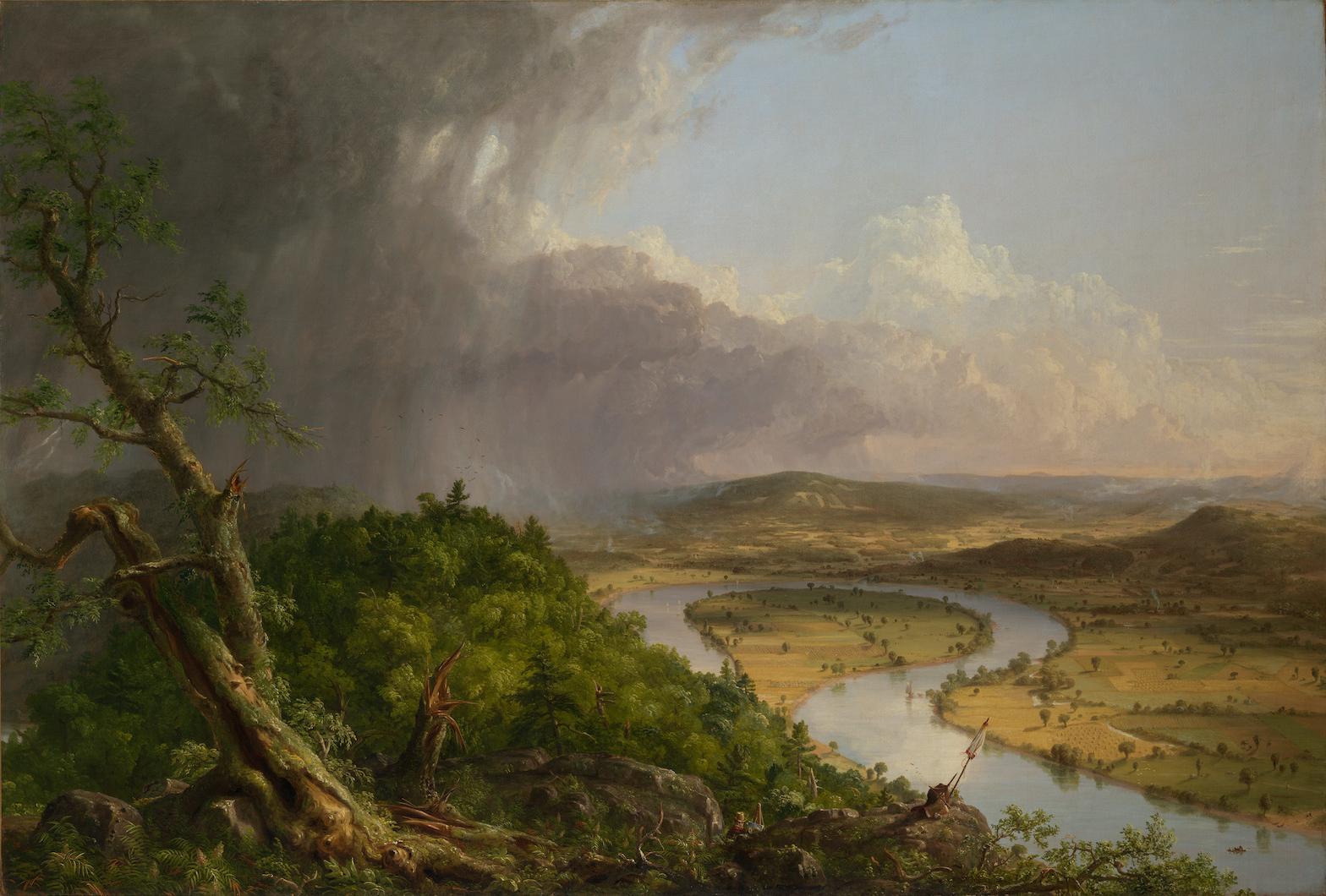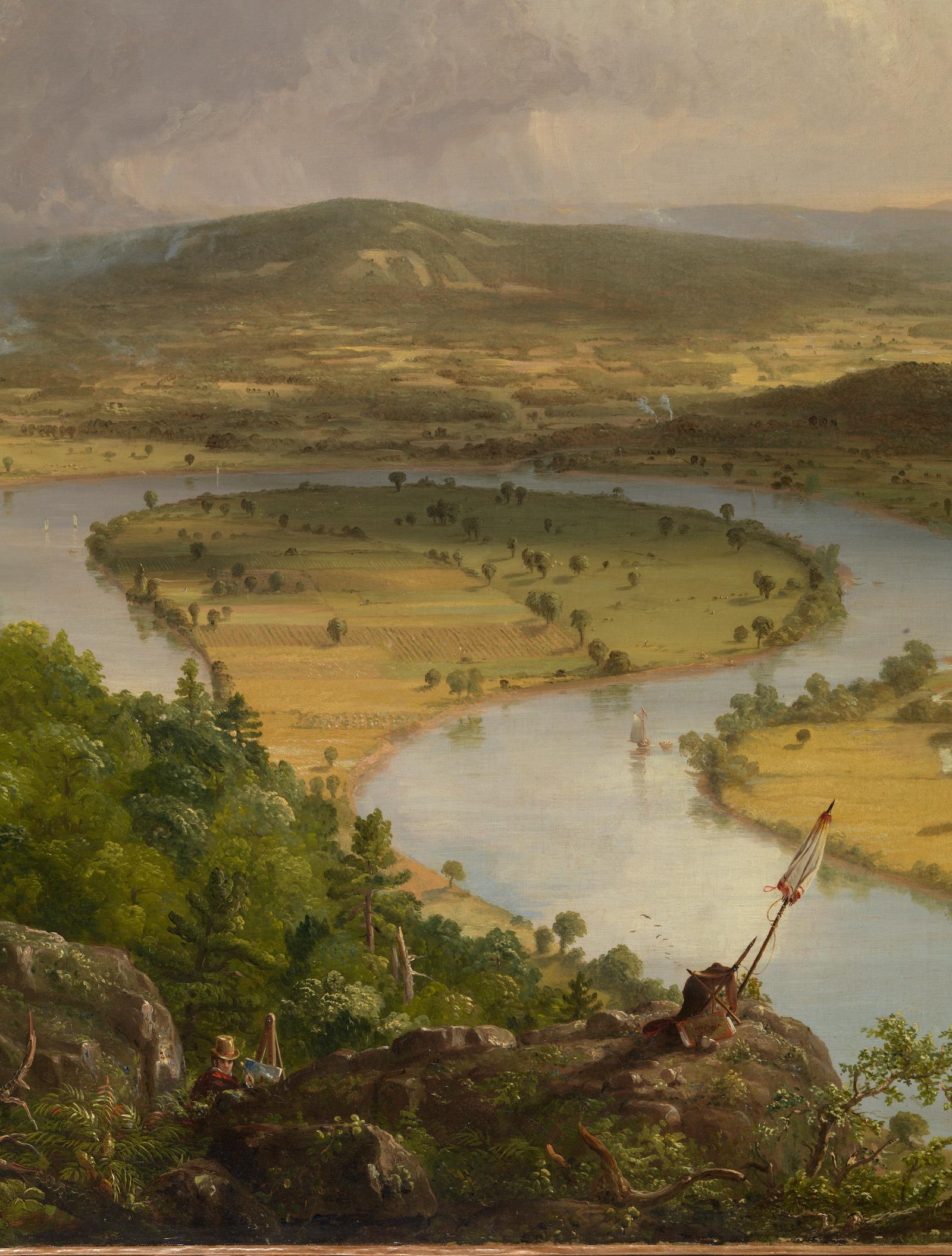The artist wrote in early 1836 to his patron, the New York merchant Luman Reed, that he wanted to “tell a tale” with Oxbow, nicknamed as such for the curve in the painting’s river. Yet Cole’s tale would be neither one of man dominating nature, nor of nature dominating man; rather, it would highlight the pastoral and Arcadian nature of the Hudson River School movement and feature man in harmony with America’s lush landscape.
Though Cole features an artist in the work’s foreground, the figure can easily be missed, so integrated is he into his surroundings.
Nearly two centuries later, Oxbow remains one of Western art’s most iconic landscapes.
What of Basil Hall? He faded into obscurity, in keeping with Cole’s nineteenth-century admonishment: “Let such persons shut themselves up in their narrow shell of prejudice.”


























